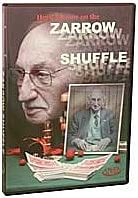
Recently I started doing a trick over Zoom where I trigger the Amazon Echo / Alexa at the spectator’s house. It’s got a fun feel, because the trick happens at everyone’s house how has an Alexa that can hear it respond.
It started out with me figuring out you could get Alexa to reveal a specific playing card by asking, “Alexa, what’s your favorite playing card?” and it will say “Ace of Spades“. Most magicians know you can get a random playing card by asking it to “pick a card“, but being able to get a consistent card is helpful for a reveal.
That going me thinking about what else might be Alexa’s favorites. I started asking all sorts of questions starting with “Alexa, what’s your favorite…” and have a little bit of a list going. There’s a list on Reddit from about 3 years ago, and some of the answers have changed since then, but it will give you an idea of some of the things to ask. Something to remember it to test your results on other people’s Alexa’s before you roll out the trick. There are somethings that have variables, like when I ask, “Alexa, what’s your favorite season?” I get one answer and other people get a different answer.
OK, now that I had the reveal for the trick, I needed to come up with the trick. I’ll write about that tomorrow…


